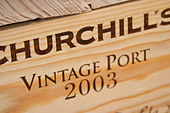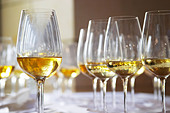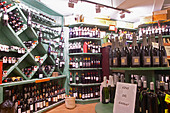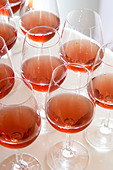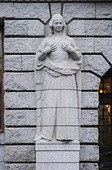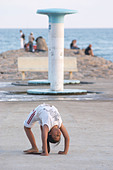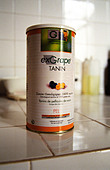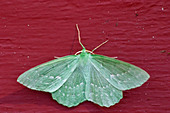 It’s done. The book is on its way from the printer’s. We haven’t seen it yet but will soon. We’re very excited. On Thursday November 19 we will have a launch event in Stockholm, so if you happen to be there you are of course welcome: Restaurant Fellini, Riddargatan 21, 16.00-18.30. (A copy of the invitation can be found here.) And if you can’t free up your time so early in the evening we will be at the Prime Wine Bar on Östermalmstorg from 19.30.
It’s done. The book is on its way from the printer’s. We haven’t seen it yet but will soon. We’re very excited. On Thursday November 19 we will have a launch event in Stockholm, so if you happen to be there you are of course welcome: Restaurant Fellini, Riddargatan 21, 16.00-18.30. (A copy of the invitation can be found here.) And if you can’t free up your time so early in the evening we will be at the Prime Wine Bar on Östermalmstorg from 19.30.
The book tells the story of how a wine is made. It’s aimed at the wine enthusiast but can also be used as a wine course book. It’s quite unusual in that it goes into details of vine growing and winemaking – but with a text aimed at the wine lover.
The story in the book evolves around two themes: First, our innumerable conversations with winemakers, interviews, vineyard visits (we visit some 200-300 vineyards each year), wine shows etc. They are to a great extent the ones who tell the story in the book, explaining what they do and why. Secondly, we show that there are rarely any absolute truths. There are always different sides to an argument. If one winemaker says that you should absolutely have stainless steel fermentation tanks to make good wines, his neighbour will be convinced concrete is the best. The same goes for closures, oak, filtering, planting density etc etc. And both are generally right and make good wines. The interesting thing then is why you do this or that. And we explain, or let them explain, that in the book.
The book has two sections: The first half is dedicated to the vineyard: planting, vines and grape varieties, training and pruning methods, soil, climate, illnesses, manual vs. mechanical harvest etc. We also try and get to grips with this thing “terroir”. The vineyard section ends with an explanation of organic wine growing and biodynamic wines (issues that are often misunderstood!). We try and explain it in a practical, down to earth way.
The second half talks about the work in the wine cellar: The importance of sorting (and how you do it), crushing, pressing, fermentation is looked at in detail, as is the ‘upbringing’ of the wine (élevage) and the aging, the influence of oak, assemblage (blending), fining and filtering (should you or should you not?) etc. We look at what various substances you can add in the winemaking to control and influence the result. Closures have a chapter of their own (another subject that is often misunderstood): natural cork, plastic cork, screw caps, etc, as does ‘special’ vinifications: sweet wine and sparkling wines. Finally we look at defects and problems, e.g. corked wine and reduction, and what types of wine you should cellar and age.
One day we hope to have it published in English! (Currently it is in Swedish only.)
There’s been an some interesting discussions on the internet recently about drinking.
One has been with a Swedish food writer who wrote a blog post about the charms of getting drunk. We find it a bit difficult to understand that attitude. If even adults, presumable responsible people, think that the primary reason to drink wine (or other alcoholic beverages) is because you get drunk or more or less inebriated, then how can you expect youngsters to develop an intelligent and responsible attitude to drinking? We voiced our opinions in a comment to her blog post but it seems we did not get much support for our views. (If you read Swedish you can read more here)
Another discussion on the internet has been about children and wine, primarily from an American perspective. Some writers have compared the American attitude to the “wise” European view that making wine a taboo subject for children is not the best way of giving them a sense of what it is and a sense of responsibility. Perhaps it is better to let the children wet their finger in the wine and taste it, and learn what it is about (part of the gastronomy around the family dinner table) rather than hiding the issues of alcohol behind a wall and making it into a so-much-more-desirable forbidden fruit? It seems the authors of the blog post have not understood how things work in Sweden (or in the UK?), or perhaps those countries are not considered part of Europe. Read more below.
And also, the latest publicity campaign from the Swedish retail monopoly underlines that Swedes are only half a step away from when we were savages and rampaging and pillaging Vikings. They have taken out double spread ads in the main daily paper proclaiming “We invented the World’s smartest way of selling alcohol”! Who said Swedes were a humble and self-effacing people? Read more below.
Wine bloggers
We’re just back from the European Wine Bloggers Conference (#EWBC in twitter-speak). It was a great event and very interesting. Wine bloggers comes in all flavours, shapes and sizes! It was an unlikely mix of people. But whatever kind of people they are they are terribly nice fellas! the conference agenda covered lots of things: wine tourism, 1-0-1- of wine blogging, how to video blog, how to monetise blogging (BKWine was on the panel of that one) and much much, more. But more important than the sessions were all the people you met, talked with and discussed with. And there were an awful lot of excellent Portuguese wines to taste too! Something to put on your agenda for next year if you are a wine blogger!
Samples and freebies
Another big discussion on the interent (and originally on the European Wine Bloggers Conference, #EWBC) was on wine samples and freebies. Should wine bloggers accept free samples from importers or wine producers? Is it acceptable to take samples? Should one always specify in the blog articles that the reviewed wines have been received as samples? Interesting questions. But not necessarily limited to wine bloggers. Read more about it further down.
Britt & Per
PS: Recommend to your friends to read the Brief or forward it to them !
More on wine:
Read all of the BKWine Brief here! 


Read more...
